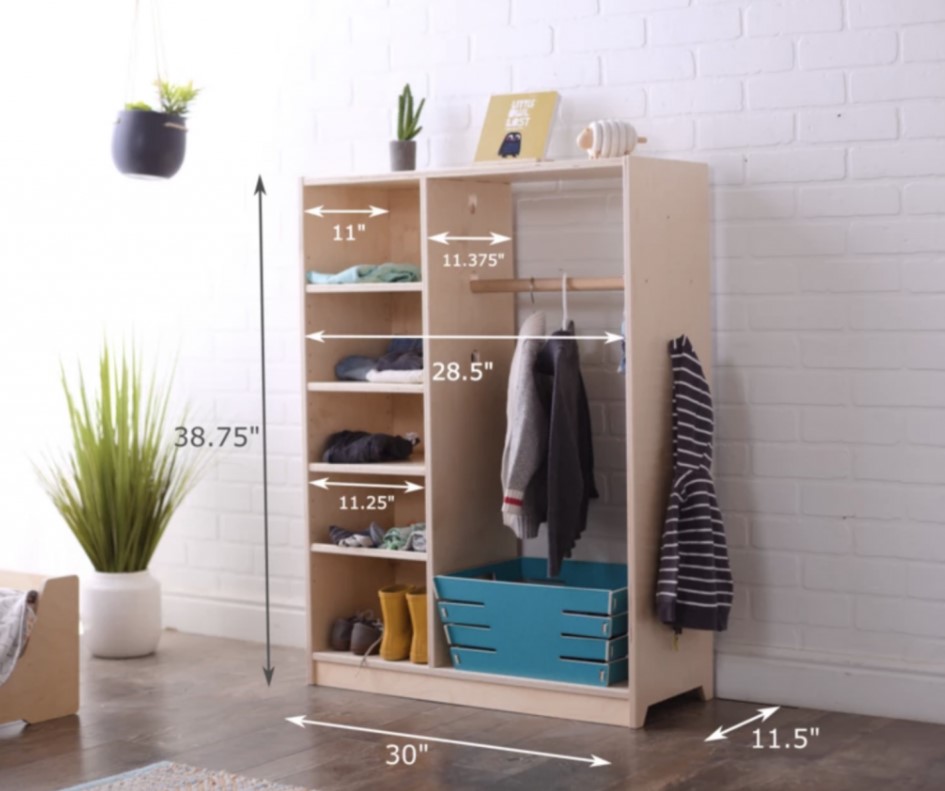7 Tips for Kids’ Rooms Wardrobes
Think about how special it feels for a child to have a space they can call their own. A wardrobe, though it seems like a simple storage unit, plays a huge role in their daily life—it holds their clothes, toys, and little treasures. Designing a wardrobe for a child’s room needs thoughtfulness because it’s not just about storage; it’s about safety, functionality, and sparking creativity.
If you’re planning a wardrobe for your child’s room, here are some easy-to-follow tips to make sure it checks all the right boxes.
1. Pick Colours That Are Playful Yet Versatile
Kids love bright and cheerful colours, but it’s also smart to think long-term. Instead of committing to loud colours like neon green or bright red, go for neutral shades like white, soft blue, aqua, or beige as a base. You can always add personality with pops of colour through quirky handles, stickers, or a chalkboard surface. This way, the wardrobe feels playful now but can still work as your child grows older.
Tip: Add a chalkboard panel to one of the wardrobe doors—perfect for doodles, reminders, or just letting your child’s creativity flow.
2. Maximise Space with Tall Designs
Not every child’s room has loads of space, but that doesn’t mean you have to compromise on storage. Floor-to-ceiling wardrobes are a great way to make the most of vertical space. Use the lower sections for items your child uses often, and reserve the higher shelves or loft for storing seasonal clothes or extra blankets.
Tip: Glossy finishes on wardrobes can reflect light and make small rooms feel bigger while being easy to clean.
3. Keep Drawers at Kid-Friendly Heights
For kids, accessibility is key. Place drawers low enough for them to reach easily. These drawers can hold their everyday essentials like socks, t-shirts, or small toys. As they grow taller, these same drawers can store shoes or accessories.
Tip: Add dividers inside drawers to keep everything organised, especially for tiny items like socks or hair ties.
4. Choose Surfaces That Are Easy to Clean
Kids’ wardrobes are bound to get messy, whether it’s with fingerprints, crayons, or accidental spills. To save yourself time and stress, choose finishes like laminate or lacquer. These materials are not only durable but also simple to wipe clean, keeping the wardrobe looking fresh.
Tip: Matte finishes can hide smudges better, while glossy surfaces are easier to wipe down—pick based on your lifestyle.
5. Add Fun and Functional Handles
Handles might seem like a small detail, but they can bring a wardrobe to life! Choose playful designs like stars, hearts, or even animals to make the wardrobe feel more personal for your child. These little touches make the wardrobe fun to use and add charm to the room.
Tip: Position handles at a height that’s easy for your child to reach but high enough to avoid accidental bumps or scrapes.
6. Plan Storage for Both Toys and Clothes
A kid’s wardrobe isn’t just for clothes—it often needs to double as storage for toys, books, and other knick-knacks. Use pull-out bins or baskets to organise smaller items like toys and games. Lower shelves can hold shoes or frequently used toys, while the higher areas can store things like winter coats or outgrown clothes.
Tip: Use door hooks or hanging pockets inside the wardrobe for hats, backpacks, or other small items that usually end up scattered around.
7. Leave Room for Growth
Kids grow quickly, and so do their storage needs. Choose a wardrobe design that can adapt with them over time. Adjustable shelves and rods are a great option, as they allow you to rearrange the storage to suit your child’s changing needs.
Tip: Reserve some extra space in the wardrobe for future needs, whether that’s more clothes, sports gear, or school supplies.
Conclusion
A well designed wardrobe isn’t just about organisation—it’s about creating a space that’s functional, safe, and even a little magical for your child. With the right balance of playful touches and practical features, you can build a wardrobe that keeps up with their growth and inspires their imagination every day. So, take these tips, add a splash of creativity, and create a wardrobe that your child will love for years to come!

